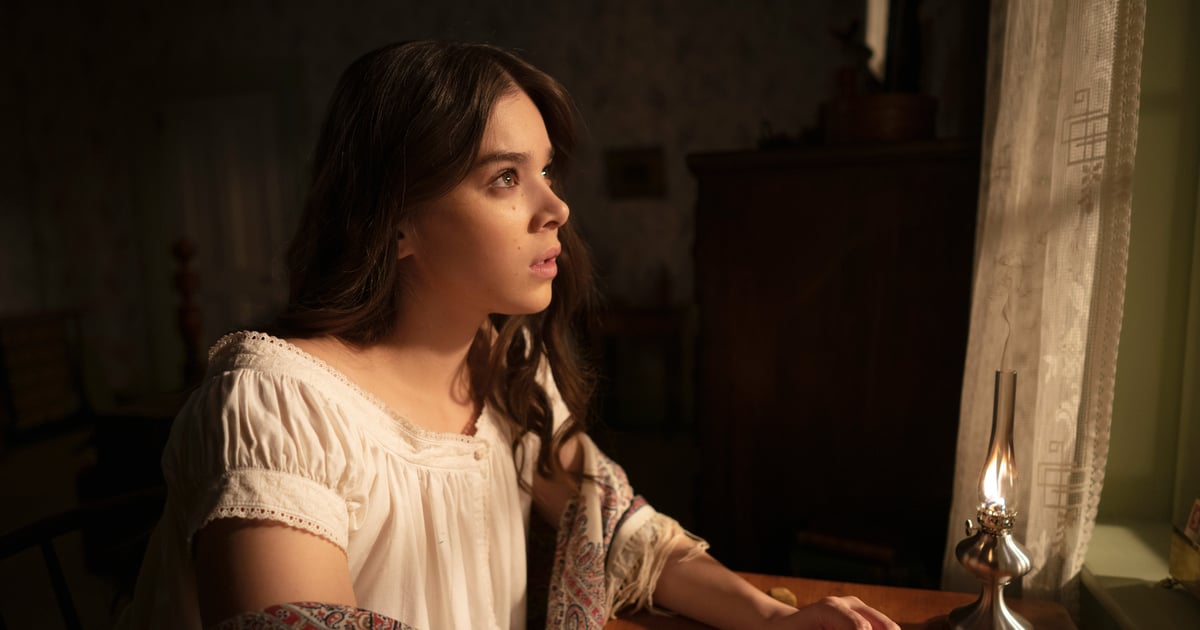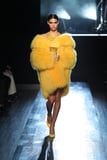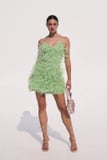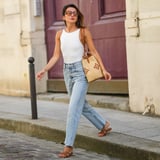
February 09, 2021 at 08:51PM
When we first heard that Hailee Steinfeld would be starring as Emily Dickinson, we could barely contain our enthusiasm. Just imagine the lush costumes! And we’re happy to report that the appropriately named Apple TV+ show Dickinson, now in its second season, certainly delivers in the fashion department, thanks in large part to costume designer Jennifer Moeller.
Throughout the series, best friends and occasional lovers Emily Dickinson and Sue Gilbert (Ella Hunt) are dressed in 19th-century clothes that are fittingly restrictive. That is, except for when Emily is at home writing poetry. In those quiet moments, in the privacy of her own bedroom, she wears a house dress that exudes comfort and a casual air of flippancy: Emily is dressing for herself and herself only. In other words, she is all of us in lockdown.
Here, we talked to Moeller about dressing a literary icon and the enduring appeal of the house dress.
POPSUGAR: What was your approach to the wardrobe this season? There are more nights out at operas, parties, etc.
ADVERTISEMENT
ADVERTISEMENTKate Spade Autumn/Winter Sale |
Jennifer Moeller: Exactly. In season one there was just one party; now there’s party after party after party. The big change is that Emily and Sue have both grown up a bit. They’re moving into their 20s – or the 1850s equivalent of that – and they’ve matured. I tried to show that with their clothes. Emily’s more confident in her writing, so her clothes have a little more confidence – there are bolder shapes and patterns.
PS: How did you go about dressing Emily?
JM: There’s a poem attached to every episode, and I definitely think about [Emily’s] looks in terms of that poem. Famously, there are two photographs that exist of Emily Dickinson. The first is taken in 1847, when she is about 17 years old, and she’s wearing something that is appropriate for the time period. The only other photograph is taken in 1859, the year season two is set. In that photograph, the style of her dress is rooted in a way earlier period; it’s very unfashionable for the time. It’s interesting to think of Emily that way: somebody who’s not necessarily so concerned with her clothes.
Emily’s more confident in her writing, so her clothes have a little more confidence – there are bolder shapes and patterns.
PS: Tell us about Emily’s at-home look. The white dress she wears while writing is like a 19th-century version of the nap dress.
JM: That’s a chemise, or the under layer. Women would frequently wear them in private because it’s more comfortable, and they would sleep in them on occasion too. It would be the equivalent of [a nap dress]; it’s like hanging out in your PJs!
PS: What was considered fashionable at the time?
JM: The 1850s is a transitional period in fashion. In the 1840s, people started to pile on the petticoats in an attempt to expand the size of the skirt. They would wear 10 or 12 layers to get that beautiful bell shape. Pair that with the corsets, which are super restrictive, and it just becomes a really uncomfortable, heavy, cumbersome look to achieve. In the 1950s, crinoline, or the hoop skirt, was used to get the bell shape without the layering. It’s essentially a form cage made from rings of steel. Then that just gets bigger and bigger and bigger from there.
PS: How true were the costumes to the period?
JM: I always dive into any original source material first – I’ll look at real clothes from the period to see how they’re made, where the style lines are, and where the seams are. Then I’ll riff off that and take what I feel like is the essence of the period. We moved some seams and style lines around to make things a little more palatable to the modern eye. Some of the purists will realize that I’ve taken some liberties, but the hope is that you feel like you’re very much grounded in this period.
I’ve taken some liberties, but the hope is that you feel like you’re very much grounded in this period.
PS: There’s a scene where Jane compliments Sue’s dress, and Sue tells her matter-of-factly that “it’s from New York; actually, the original design is from Vienna.”
JM: That fabric is one that I cheated with – it’s French lamé, which would not have been around at the time. Amherst, Massachusetts, is a small town – it’s not on the cutting edge of fashion. With Sue, I got an opportunity to be extravagant and over the top. Back then, people were still recycling clothes and adapting things they already had. It took awhile for the trends to come out of Europe and arrive in the States. Sue is of the moment, up to the minute.
PS: Where did you find the clothes? Or is everything custom-made?
ADVERTISEMENT
ADVERTISEMENTSports Direct Free Delivery on All Orders! |
JM: You can’t! There is no 1859 section at Macy’s [laughs]. We had to get everything made. It can take anywhere from 50 to 100 hours to make each dress.
Scroll on for a peek at some of our favorite looks.
This interview has been edited and condensed for clarity.
More Celeb News
Author Claire Stern | Popsugar
Selected by CWC
ADVERTISEMENT
ADVERTISEMENTUp to 30% off Gift Sets |







